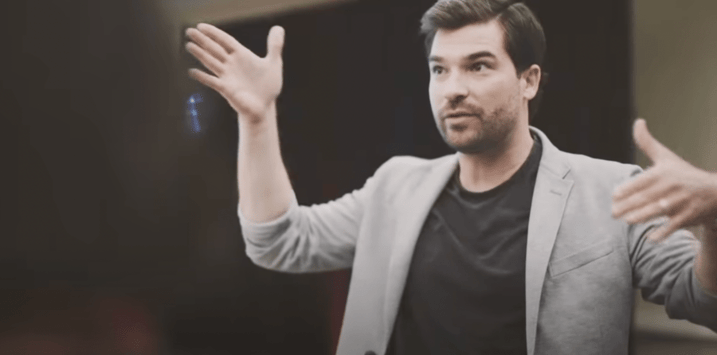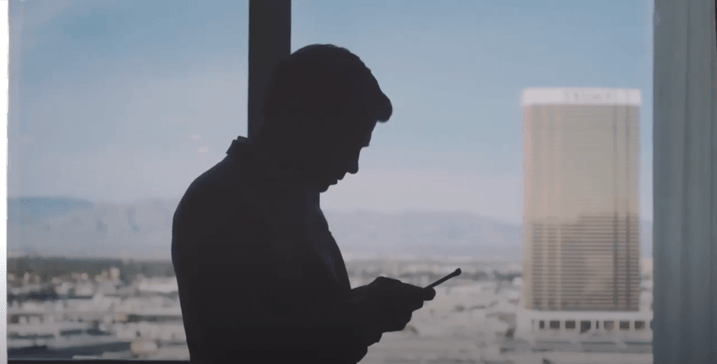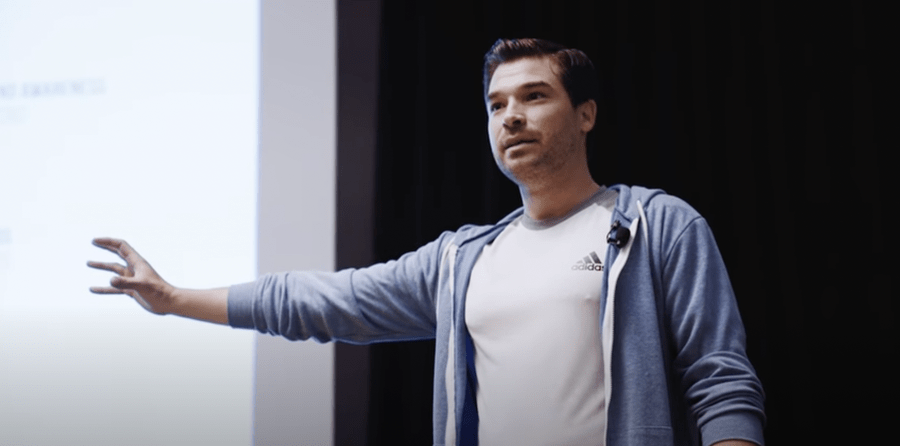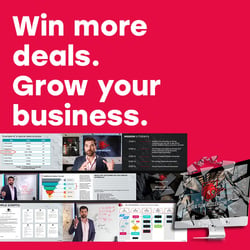How to Use Your B2B Sales Funnel to Secure Customer Loyalty
The most valuable asset in B2B business is long-term customer loyalty. Laying a strong foundation for future loyal customers begins in the B2B sales funnel.
Therefore, if you want to generate the kind of loyalty that top companies like Apple and Salesforce have, then getting your sales funnel in order is crucial!
To help you secure your greatest potential business asset, we're sharing exactly how you can improve your B2B sales funnel.
Once you've secured loyalty thanks to your funnel, then you've secured yourself some of the greatest perks that come with strong customer retention, including referrals for already qualified leads and subjects for content marketing.
Bottom line: If you want to secure yourself the most valuable asset in business, then your B2B sales funnel needs to be in tip-top shape.
This is everything you need to know about gaining loyalty using your funnel… Will you just put the plan into action now?
The Undeniable Importance of Customer Loyalty (DON'T SKIP)
Businesses exist for the purpose of serving others. Every business owner in the world will tell you that they once saw a problem in the world and set out to fix it by starting a business.
Therefore, the sign of a strong business is having a loyal customer base. Because, the better a business serves its customers, the more loyal the customers are in return.
Think about it like this... Are you one of the many people who refuses to consider any computer other than an Apple because you feel a sense of loyalty to the company?
If so, you're not alone! Apple has hit the nail on the head in terms of serving their customers right.
You can also gain that same kind of loyalty if you learn how to serve your customers right!
That being said, effectively serving your customers comes down to two things:
- What you deliver (your product/service)
- How well you deliver it
We can't tell you how to make your individual product or service better, but we can tell you this: How you deliver your deliverable is what will secure you the kind of loyalty that the top businesses in the world have.
And, the how aspect begins during the B2B sales funnel before the customer even buys the deliverable! Because, the funnel is all about not just showing your prospect the ins-and-out of the deliverable, but giving them an experience that'll make them feel fulfilled.
Bottom line: If you want the kind of high retention that only the best businesses in the world can boast about, then you must know how to effectively serve your customers. And, that service begins during the sales funnel!
What Is a B2B Sales Funnel?
A B2B sales funnel is the buyer’s journey that your potential customers experience. From the moment they first connect with you to the moment they make a purchase decision, it's all a part of the sales funnel.
The quality of the experience that potential buyers go through during the funnel ultimately determines whether or not they will sign their name on the dotted line or not.
That begs the question... What are B2B leads looking to experience during the sales funnel?
There are three key things that B2B companies want to experience during the funnel, including:
- Assurance that you know how to solve their pain point
- Assurance that you understand all of their needs
- Confidence that they'll form a strong B2B customer relationship with you and your sales team
To put it more simply, B2B companies want to be sure that you will not just solve their problem, but help take them to the next level.
If you want to end the funnel with a closed deal, it is your job as a B2B salesperson to cater to these three needs!
Sales Funnel vs. Sales Process
The sales funnel and sales process are intricately connected yet not the same thing!
Also known as the sales cycle or sales pipeline, a sales process is the series of steps that sales teams take to generate new customers.
You can think of the sales process as the backend coding that creates the front end sales funnel. And, you can think of the sales funnel like the user interface that your potential customers experience.
So, you can't have a funnel without a process, and because your process works as the backend of the funnel, it inevitably sets the stage for what your funnel will look like.
That being said, if you haven't already, use our complete Sales Process Flowchart to develop a simple yet highly effective process.

How Do You Make a B2B Funnel?
Because the B2B sales process is the backend for the funnel, the first step to developing a funnel is developing a process.
Once you have a process laid out, put yourself in your potential buyers shoes and ask yourself what they would like to experience during the buying process.
Moreover, if you were them, what would you want the funnel to look like?
One major mistake that many B2B marketing and sales teams make is assuming that their buyers want the same things out of the buying process as they do.
As a result, they put together a funnel that they believe is full-proof, but inevitably flops because it's not what their potential buyers wanted to experience.
That being said, the key to making a funnel is to put yourself in your target audience's shoes and ask yourself what they want to take away from it. And, more importantly, how they want to feel during it!
What Are the B2B Sales Funnel Stages?
The sales funnel is composed of five different stages with each stage bringing prospects closer to become paying customers, including:
- Awareness
- Discovery
- Evaluation
- Purchase
- Loyalty
Each stage of the sales funnel corresponds with a specific stage of the sales pipeline. For example, the awareness stage of the funnel corresponds to lead generation in the sales pipeline.
Another important key to keep in mind is that with each stage of the funnel, the B2B buyer's emotions should build even higher and then peak at the purchase stage.
Moreover, the top of the funnel is where emotions start brewing, while the bottom of the funnel is where they peak.
When you set your sales funnel model up this way, you play to the factor that pulls the most significant amount of weight in terms of whether or not a customer makes a purchasing decision in your favor: Emotions.
How to Secure Customer Loyalty With Your B2B Sales Funnel
If you want to secure the kind of loyalty that the top companies in the world like Apple and Salesforce have, then start by developing a full-proof B2B sales funnel.
Remember, the funnel is important because it creates the experience that your potential customers go through before choosing you for their solution.
Therefore, if you can show them a good experience before they even get the product or service, then there's significantly greater odds that you'll get them to sign on the dotted line come decision-making time.
Solid, long-term customer relationships are the single-greatest business asset. Will you make the investments to get the asset?
1. Create Awareness By Generating a Sense of Urgency
The first stage of the sales funnel is getting potentially quality leads to be aware of you, your company, and, most importantly, the fact that you see a problem in their company.
It's the first contact that you make with the leads and corresponds with the lead generation phase of the sales cycle. Sales reps use outbound sales tactics like cold calling and messaging, as well as inbound inbound marketing tactics like SEO and social media.
When it comes to this stage of the funnel, the absolute most important thing you need to do is build up a sense of urgency in the prospect. That urgency is the thing that makes them feel compelled to either respond or reach out to you themselves.
How do you create urgency?
By showing them that you notice a problem in their business that could be hindering their success.
Show The Potential Customer a Clear Problem
First and most importantly, you need to express to your leads that you see a clear problem in their business that they not only need to get solved, but that you can help them solve!
By showing that you've caught them with a problem on their hands, you immediately light an internal flame inside of them.
Think of it like this... Imagine that you believe you've created the best science fair volcano ever and are extremely proud of it. But then, last year's science fair winner comes up to you and says... 'Hm, I spot something off here'. Wouldn't it make you light up inside knowing that someone sees a problem with your project?
You need to do that same thing with your customers... Show them that you've found a crack in their business and let them know that you know how to fill it!
Set Up a Sales Meeting Right Away
Once you expose the problem to your customers, immediately set up a call to discuss resolving the issue. The goal during that meeting is to:
- Talk about the clear problem at hand
- Introduce your solution
- Introduce yourself as an expert at solving the problem
Moreover, your goal is to make the prospect aware of you and your solution, AND to set up a more formal sales meeting for later!
Follow-Up As Much As You Need to
Did your lead not respond to your initial message or call?
No problem... Send them another message or call them again within 24 hours of the first one.
Remind them that you've found a problem with their business that you believe they ought to know about!
If they've accidentally forgotten about or missed your first message, then this one will grab their attention right away.
If they're intentionally pushing your message to the side, sticking to consistent follow-up will continue to build up urgency until they decide that they need to hear what you have to say!
-min-4.png?width=717&name=1%20(1)-min-4.png)
2. Let Potential Customers Discover You, Your Solution, & Themselves
The next stage of the sales funnel is the discovery stage. Also commonly referred to as the interest stage, the discovery phase gives leads the opportunity to dive deeper into knowing you and your solution.
Because you created a sense of urgency in the first stage, the prospect clearly understands they have a problem that you know how to solve.
Now the challenge is to prove to them that you're the expert who understands their needs and will help them not just overcome the problem, but become a better business in general.
Here's how to do that:
Create a Storyline
Your customers are more than just people with a problem and you are more than just a sales rep with a product or service. Thinking about sales this way is boring and doesn't secure you customer loyalty.
Instead, you need to think about your customers as heroes fighting battles against their problems and your product or service the magic they need to win the final battle.
As strange, dramatic, or outlandish as it sounds, this is the way that people think about themselves... Everyone is the hero in their own book, and we're all looking for somebody to validate the storyline.
Therefore, validate your prospect's feelings by creating their buyer's journey into a storyline. As a result, you'll:
- Boost their positive emotions
- Make them feel like you care about and understand them
- Empower them
Moreover, don't just spew out all the facts about you and your deliverable during the discovery stage... Instead, turn it into a storyline! Let prospects discover through stories.
Don’t Tell Them How Good You Are, Show Them
Instead of telling your prospect how great you and your product or service is, show them the value of it by offering up case studies and testimonials.
Not only do case studies and testimonials demonstrate the effectiveness of your deliverable, but they also exhibit social proof and make leads feel a bit of FOMO.
Social proof is the feeling that a prospect gets when they see that somebody else is already taking advantage of your product or service... They look at it and think, 'This must work for me because it's working for them!'.
Additionally, when they see that somebody else is already taking advantage of your product or service, the prospect will feel a bit of FOMO! They'll think to themselves... 'This is working for them, so I don't don't to miss out on it myself!'.
Moreover, case studies and testimonials allow prospects to discover you while continuing to hype up their positive emotions.
3. Evaluate the Problem & Solution
Also known as the consideration stage, the evaluation stage gives prospects an opportunity to get close to you and your team members.
By this point, they already know who you are and what you have to offer, and you've already created the perfect storyline.
What's left is to:
- Get connected with the top decision-makers
- Do whatever it takes to keep building your relationship with them
- Manage objections and answer questions
By the end of this stage of the funnel, prospects shouldn't have any reason to not be ready to move forward with the final decision-making process.
Get the Decision-Makers In On the Customer Journey
At this point in the game, if you haven’t already, you need to establish a touchpoint of communication with the head decision-maker at the B2B company.
Why?
Because, the fourth and next stage of the funnel is making a purchase, and you don't want your prospects to tell you that they have to go and check with their superior before giving you a 'yes'.
Therefore, connect with the top stakeholder yourself (who should already have a buyer persona carved out for) and get them in on your storyline.
Bring Up Objections Before They Can
There is no such thing as a perfect product or service, buying process, or salesperson. Therefore, your prospects are likely to make objections to your offer.
However, your goal is to put those objections out on the table before your prospects can make them!
For example… Let's say that you run an email marketing agency, and while you absolutely believe in the strength of your services, you believe that your prospect could potentially object to the fact that you've only been in business for a couple of years and don't have as much experience as other agencies.
Now... Before they can make that objection, you make it known to the prospect that you've only been in business for a couple of years and then counter that fact with something positive.
For example you could say, ‘Yes, it’s true that we’ve only been in business for a couple of years and you could call that a weakness. But, despite that fact, the truth is that we’ve exceeded every one of our previous customer’s expectations before’.
By bringing up the objection before they can, they see you as someone who is genuinely honest. And when you are genuinely honest with them, they feel as if they can trust you more. And the more they trust you, the more likely they are to believe that you are worthy of working with.
Bottom line... Bring up potential objections before prospects make up, so that you can use them as a point to show off how honest you are.
4. Make a Purchase
It's time for prospects to make a purchase! This stage corresponds with the final sales pitch step of the sales cycle.
If you've done your job correctly up until this point, this next stage of the funnel should be the shortest one of all. More than that, it should be easy for your prospects to choose YOU for their solution.
It should be easy for them to make a purchasing decision in your favor because you've already:
- Built-up a sense of urgency
- Let positive emotions flow by allowing prospects to discover you and themselves through a storyline
- Solidified their trust in you to deliver
Your goal is to make this the shortest stage of the entire sales funnel. All you need to do is put the deal on the line and get your prospects to agree. It's as simple as that!
Reach the Climax of the Storyline
Remember, your prospects are characters in a storyline, and they're currently battling an evil villain. That villain is the pain point that you're there to solve with your deliverable.
With the prospect's emotions reaching their peak, it's time for you to enable them to strike the villain down by laying a deal on the table for them to sign. By doing so, they slay the villain and are finally able to get back on track to improving their business!
Again, if you've done your job correctly up until this point, getting prospects to give you a 'yes' should be simple.
Because they've reached the peak in their emotions, getting them to sign the deal should be like cake.

5. Secure Loyalty By Delivering
The final stage of the sales funnel is all up to you and your sales team. The prospects have done their part and signed the deal, so now what's left is for you to deliver on your promises.
Remember, although the deal is done, the B2B sales funnel is only the very start of gaining long-term customer loyalty. Moreover, if you want to stay on track to secure loyalty, you need to deliver on your promises!
You may have had the greatest sales funnel ever, but that doesn't mean you can neglect your customer's experience from here on out. If you do, then you'll ruin all the effort you put into the funnel.
The good news is that securing loyalty from here on out is quite simple... All you really need to do is remain accountable for everything you said you were going to do for the customer.
Securing loyalty is simple, not difficult. If it feels difficult, then you're doing something wrong.
Final Thoughts on Securing Loyalty With Your B2B Sales Funnel
You can have the highest conversion rates, best digital marketing strategy, or best sales pitches in the world, but none of those things even compare to the value of having loyal customers in your arsenal.
At the end of the day, a successful business is one with the most loyal customers! And, loyalty is secured during the customer’s experience in the sales funnel.
That being said, if you want to gain the most valuable business asset in the world, invest your time in developing a top-notch sales funnel.
Thankfully, you now have everything you need to take your funnel to the next level… So now it's just a matter of getting to work!
You May Also Like
These Related Articles

Why 99% of B2B Sales Funnels Cause Sales Failure!

10 Reasons Why You Should Trash Your B2B Sales Funnel




